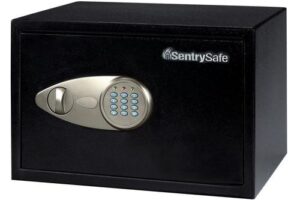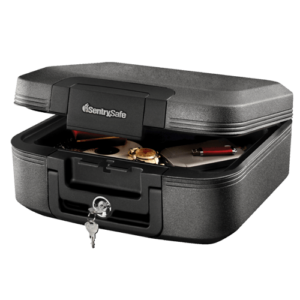It used to be that buying a safe meant you were looking to protect valuables from prying hands (and prying bars). These days, there are an addition four Fs to add alongside protection from fraudulent folk: fire, flood, falls, and firearms. Whatever the reason, whether you live in a share house or are concerned about thieves, almost every safe and lock box is built with this protection in mind.
To boost protection against unwanted entry to your home safe, keep an eye out for cash ratings. These are a manufacturer claim of how much an insurer is likely to cover if the safe is bypassed. Additionally, torch and drill resistance costs extra but provides greater peace of mind that an eligible home safe offers better protection against oxyacetylene torches and other tools.
The other Fs are trickier and tend to cost more. Fire protection is a growing concern in Australia, and a home safe with an appropriate fire rating can keep contents protected for up to an hour of heat and flames. Fire-rated safes may also offer reasonable water-resistance, too, but it’s worth checking for verifications of this claim (independent verification is best). If you don’t plan on securing your safe to a wall or to the floor, you may want to consider a safe with fall protection so it can’t be dropped to bypass the locks.
Finally, if you’re a firearms owner, there are certain federal and state requirements for storing a firearm when it’s not in use. This means you can’t just pop on down to Bunnings to grab a safe on special; instead, you’ll have to source a purpose-built firearms safe.

